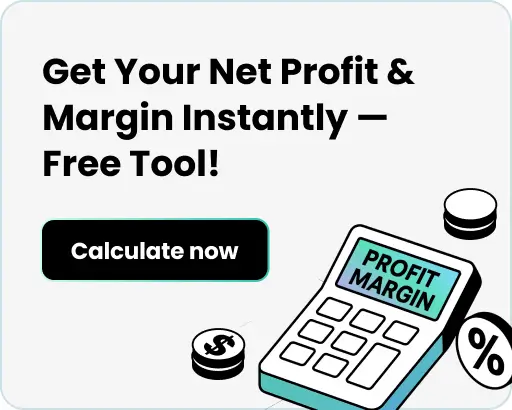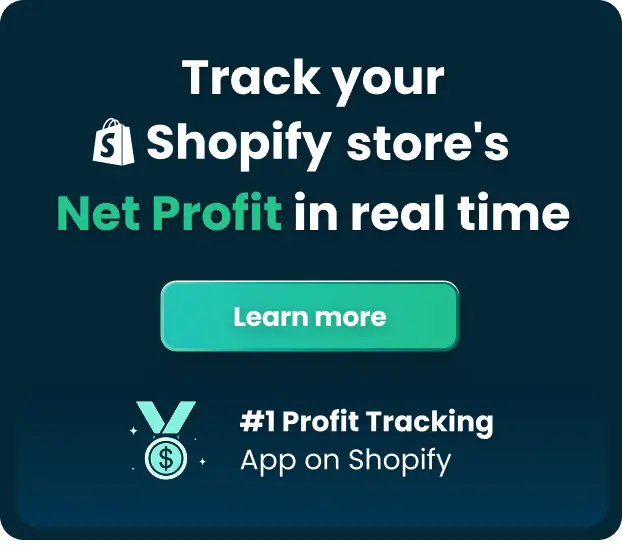What’s a Good Average Shopify Conversion Rate in 2025?

Shopify conversion rate is one of the most critical metrics for store owners because they reveal how effectively your site turns visitors into paying customers.
In this guide, we’ll break down what Shopify conversion rate means, the average numbers you should know, what counts as good or bad, and how you can improve yours through conversion rate optimization (CRO).
Let’s dig in.
What’s a Shopify Conversion Rate?
Shopify conversion rate is the percentage of Shopify store visitors who result in conversion action—most commonly, making a purchase.
It’s calculated as a percentage:
So, if 1,000 people visit your store and 30 place an order, your conversion rate is 30 ÷ 1,000 × 100 = 3%. Shopify’s Analytics tracks this automatically in its dashboard, so retailers don’t need to calculate it manually every time.
Without further ado, here’s the average Shopify conversion rate.
What’s the Average Shopify Conversion Rate?
The LittleData did a comprehensive survey of 2,800 Shopify stores, and here’s what they found: Across all ecommerce niches, the average conversion rate for Shopify was 1.4%.
However, for mobile visitors this average drops to 1.2%. For desktop visitors the average conversion rate rises to 1.9%.
Top-performing stores can reach as high as 3.2% - 4.7%. Anything more than 4.7% will put retailers in the best 10% Shopify stores.
What’s a Good Shopify Conversion Rate?
In general, a conversion rates above 1% is considered good for Shopify stores. Harry Chu, Founder of TrueProfit also points out ATC:CR ratio (add -to-cart rate vs conversion rate): “The ideal ATC:CR ratio falls around 3:1. In other words, for every three people who start checkout, at least one should complete it.”, he explains.
Harry Chu uses this 3:1 add-to-cart-to-purchase ratio as a quick filter for winning products—and the same ratio works as a health check on your checkout flow. By watching both overall conversion rate and add-to-cart-to-purchase conversion, you’ll know whether you need to fix your funnel’s front end or your checkout flow.
What’s a Bad Shopify Conversion Rate?
A LittleData survey also revealed that Shopify's conversion rate of less than 0.1% would put retailers in the bottom 20% of stores. Meaning that fewer than 1 in 1,000 visitors are making a purchase in stores and at that point, 80% of other Shopify stores are converting better than you.
However, Founder of TrueProfit Harry Chu reminds merchants not to treat a bad conversion rate as the only metrics to diagnose Shopify stores.
“Conversion rate by itself doesn’t accurately spot what’s broken in a Shopify store”, he says. Instead, his advice is to track conversion rate alongside three other key performance metrics: click-through-rate, add-to-cart rate, and net profit on ad spend. “Together, they will help diagnose true store performance”.
Here’s how Harry Chu use these metrics to make conversion rate optimizations:
- High click-through rate with low conversions might signal that the product looks irresistible in the ad, but the pricing, shipping, or trust elements on Shopify site make people drop off.
- High add to cart rate with low conversion reveals poor traffic quality, lack of urgency nudges on checkout, or low competitive pricing.
- High conversion but low net profit on ad spend reflects each order doesn’t generate enough net profit to cover the cost per purchase.
And if all four metrics are weak, that’s often a red flag pointing to a bigger issue: poor message-market fit.
How to Optimize Conversion Rate (CRO) For Your Shopify Stores?
Conversion rate optimization (CRO) is the practice of improving your store so more visitors become customers. Most best practices are small but smart conversion-boosting UX decisions.
For more advanced solutions, many brands also turn to Shopify development services to optimize checkout flows, speed, and overall user experience.
Here’re 5 best practices that you can apply:
1. Add Urgency Nudges in the Checkout Page
Urgency and scarcity are two of ecommerce’s most powerful psychological triggers. They reduce decision paralysis and spark FOMO, giving customers a reason to buy now—not later.
MìLà, a frozen soup dumplings brand, is a prime example of conversion-focused UX Shopify stores. It added two components in their checkout page:
One, a green callout box with this message:
“An item in your cart is in high demand. Order now to reserve your delivery. Your cart is reserved for X minutes.”
Two, the visual countdown timer, suggesting the product may sell out and that the clock is ticking.
Take a look on MìLà’s checkout page:
2. Use Playful Cross-Sell Copy in the Cart
Cross-sell copy doesn’t need to be long or complicated. A good copy is one that’s simple, playful, and low-pressure, just like Taco Bell’s:


This short, witty headline in the cart can unexpectedly spark extra orders and lift average order value (AOV).
3. Sell Products Even on the Menus
The product page isn’t the only place to sell. Allbirds even add visuals to dropdown under menu navigation, doing so give shoppers an instant sense of where to click.
4. Sell Products Even on the Menus Clear, Theme-Driven Names
Again, menu navigation can be the golden place to sell, yet too many Shopify stores waste it with generic labels like “Products” or “Shop.” These add no spark and do little to guide intent.
Instead, use names that carry meaning and connect directly to customer desires. Plunge does this well—swapping a bland “Shop” for “Cold Therapy” and “Sauna.” Each name cues the benefit, not just the item.
5. Add Non-Shipping Links
Not every click has to go straight to checkout. Adding non-shopping links can actually lift conversions by showing depth and authority.
Think FAQs, About Us, Blog, or even “For Business.” These pages reduce doubts and give shoppers more reasons to trust you.
Take Gymshark—they don’t just sell apparel, they link to workout guides in their nav. Customers stick around, learn, and feel more confident buying.
6. Clickable Buttons & Arrows
Adding arrows, plus icons, or clear CTA buttons inside your navigation helps guide shoppers and reduce friction.
On desktop, arrows next to expandable menus make the experience more intuitive—especially for older or less tech-savvy shoppers.
On mobile, go big. Thumb-friendly tap targets are essential. Nothing tanks conversions faster than a fiddly nav on a small screen.
Look at Nike’s mobile nav—large arrows and collapsible menus keep browsing smooth without endless scrolling.
Beyond Benchmarks: What Really Drives Shopify Conversions
Conversion benchmarks and ratios show where improvements are needed. To connect those improvements with the store bottom line, you can use TrueProfit.
It’s a net profit analytics tool built to reflect every optimization effort through profit - the true bottom line after calculating all costs from revenue. TrueProfit can help:
- Track ad campaign-to-checkout performance through impressions, click-through-rate, conversion rate, add-to-cart rate, cost per purchase, and more.
- Smartly A/B test with all changes reflected in real-time analytics dashboard
- Measure CRO effort based on its impact on the bottom line.
Doing all provides you a complete view of store performance—so you connect every optimization not just for conversions but for true profit growth.


Leah Tran is a Content Specialist at TrueProfit, where she crafts SEO-driven and data-backed content to help eCommerce merchants understand their true profitability. With a strong background in content writing, research, and editorial content, she focuses on making complex financial and business concepts clear, engaging, and actionable for Shopify merchants.




 Shopify profits
Shopify profits




